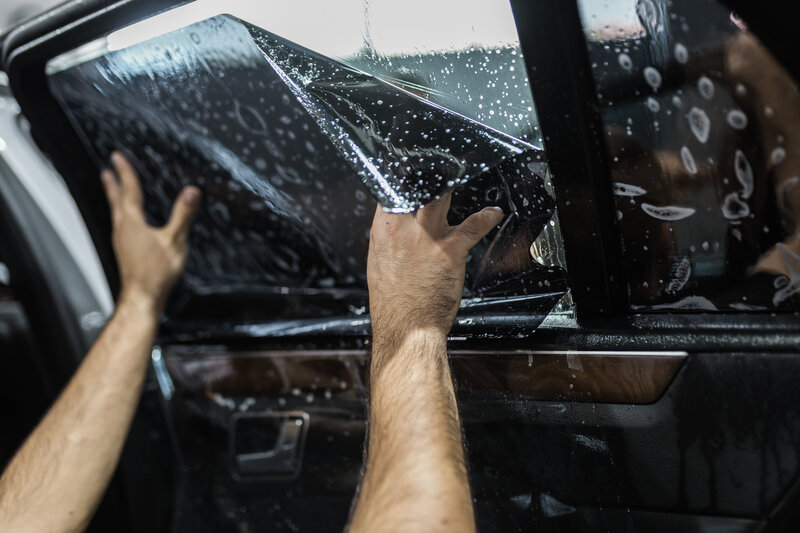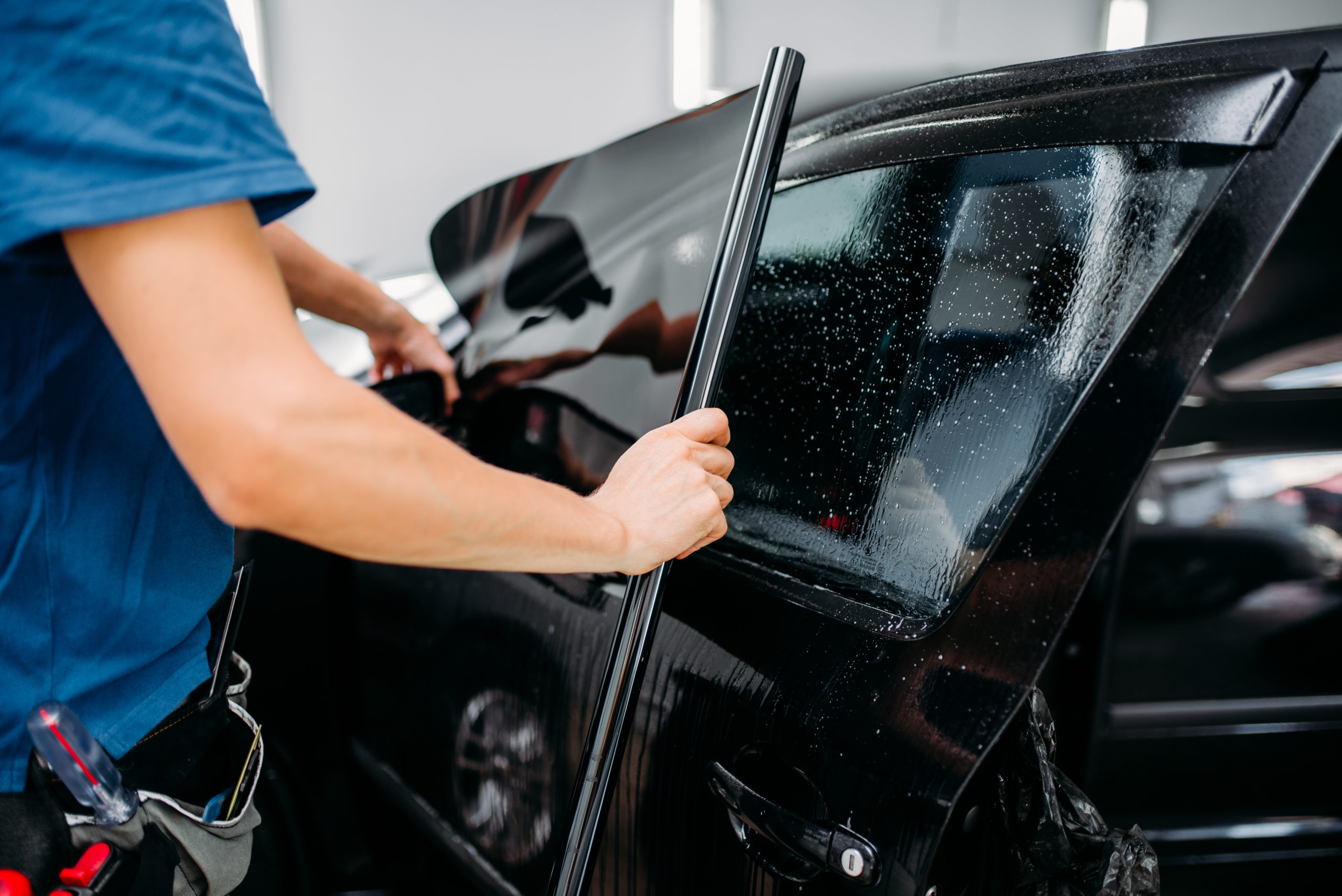The Technology Behind Window Tinting: How It Blocks UV Rays and Sunlight
The Technology Behind Window Tinting: How It Blocks UV Rays and Sunlight
Blog Article
Window Tinting Options: Find the Right Shade for Your Style and Needs
Picking the suitable window tint for your automobile entails a careful factor to consider of numerous variables, including individual appearances, practical demands, and legal restrictions. With options ranging from light tintss that supply very little privacy to darker tones that boost privacy, the options can be frustrating.
Understanding Window Tinting Levels
When thinking about window tinting, it is important to comprehend the numerous levels of tint readily available, as they considerably impact both looks and capability. Window tinting is classified based upon Noticeable Light Transmission (VLT) portions, which indicate the amount of light permitted to pass with the glass. The VLT portion can vary from really light (over 70%) to really dark (below 5%)
The primary degrees of tint consist of clear, which uses UV security without modifying exposure; light tint (over 50% VLT), which a little minimizes glare while preserving exposure; medium tint (around 35% VLT), striking an equilibrium in between privacy and light transmission; and dark tint (listed below 20% VLT), providing significant privacy and warm decrease yet restricting outward presence.
Comprehending these degrees is essential as they can affect driving safety, lawful compliance, and personal convenience. Furthermore, local regulations typically dictate allowable tint degrees, varying by state or community. For that reason, before choosing a color, it is recommended to research and ensure adherence to these laws while considering individual choices for design and functional benefits.
Popular Tint Shades Explained

Among one of the most preferred alternatives is the timeless dark tint, normally ranging from 20% to 5% VLT (Noticeable Light Transmission) This shade provides optimum personal privacy and a streamlined, sophisticated look. It efficiently obstructs UV rays and warmth, making it suitable for sunny climates, though it may restrict visibility during the night.
On the other hand, lighter tones such as 35% or 50% VLT supply a much more subtle look while still supplying some degree of personal privacy. These tones are ideal for those seeking a balance in between aesthetics and functionality, as they allow for much better visibility and abide by different legal criteria.
One more emerging preference is the ceramic tint, which can be available in a selection of shades - window tinting. It uses exceptional warmth being rejected and UV security without considerably changing the automobile's appearance

Lawful Regulations for Window Tinting
Understanding the legal laws surrounding window tinting is vital for automobile proprietors seeking to customize their automobiles. Each state in the united state has details legislations regulating the darkness or lightness of window tintss, often measured by Visible Light Transmission (VLT) percentage. VLT refers to the quantity of light that can go through the movie and the glass integrated.
In several states, guidelines dictate various VLT percentages for various windowss, including front windshields, side windowss, and back windowss. As an example, some states may allow a tint of 70% VLT for windscreens while permitting darker tintss for back windowss. Furthermore, particular states have constraints on reflective tintss, which can produce glare for other chauffeurs.
Failure to comply with these guidelines can cause fines, mandated elimination of the tint, and raised insurance policy costs. Automobile proprietors need to more helpful hints seek advice from neighborhood regulations or state DMV websites to guarantee they are within lawful limits before proceeding with installment. Comprehending these laws not only aids prevent legal repercussions yet also makes sure a secure driving experience.
Benefits of Various Tint Materials
Discovering the benefits of numerous tint products exposes significant advantages that can improve both the functionality and visual charm of a vehicle. Each material offers unique characteristics matched to details demands and preferences.
Dyeded window films are prominent for their affordability and capability to reduce glow. Metalized films, on the other hand, deal remarkable warmth reduction and UV protection due to their reflective buildings.
Ceramic window films stand for a costs choice, supplying remarkable heat denial while keeping presence. They are non-metallic, hence avoiding any type of signal disturbance, and are extremely sturdy, resisting scratches and fading gradually. In addition, ceramic films do not include dyes, making certain a longer-lasting look.
Lastly, hybrid films incorporate aspects from dyeded and metalized choices, using a balanced performance in regards to warm denial, glow reduction, and expense. Each tint product offers one-of-a-kind purposes, allowing car proprietors to pick the very best suitable for their way of living and aesthetic choices, eventually boosting their driving experience.
Selecting the Right Tint for You
Finding the right window tint entails considering numerous aspects, including personal choices, car kind, and local laws. Initially, evaluate your individual design and preferred degree of privacy, as these will lead your option of tint shade. Darker tintss offer boosted personal privacy yet may not be ideal for all chauffeurs, especially those that favor a more open feel inside their automobile.
Following, consider your lorry type, as the shapes and size of windowss have a peek here can influence the efficiency of specific tintss. Bigger windowss might benefit from reflective tintss that lower glow while smaller windowss might be much more matched to dyeded films that use subtle appearances.
Additionally, it's important to examine regional regulations pertaining to window tinting. Numerous states impose restrictions on the allowable darkness and reflectivity, especially for front windowss. Compliance with these regulations is necessary to make certain and stay clear of fines security.
Last but not least, evaluate the tint material that finest matches your requirements. Alternatives consist of dyeded, metalized, ceramic, and crossbreed films, each offering unique benefits connecting to warm rejection, UV defense, and toughness. By considering these elements, try this site you can with confidence select a window tint that straightens with your style and functional demands.
Final Thought
Finally, picking the suitable window tint needs cautious factor to consider of numerous aspects, consisting of VLT percentages, local guidelines, and the desired visual. Different tint products provide unique advantages that can improve lorry convenience and protection. By thoroughly recognizing the available alternatives and aligning them with sensible needs and private choices, one can attain an optimal equilibrium between style and performance in window tinting choices.
Picking the suitable window tint for your automobile entails a mindful consideration of numerous aspects, including personal aesthetics, useful demands, and lawful restrictions. Each state in the U.S. has particular legislations regulating the darkness or agility of window tintss, usually measured by Visible Light Transmission (VLT) percentage. Some states might permit a tint of 70% VLT for windshields while allowing darker tintss for back windowss.Locating the right window tint includes thinking about different factors, including individual preferences, car type, and local laws.In final thought, selecting the proper window tint calls for cautious factor to consider of numerous variables, consisting of VLT percents, neighborhood laws, and the preferred visual.
Report this page